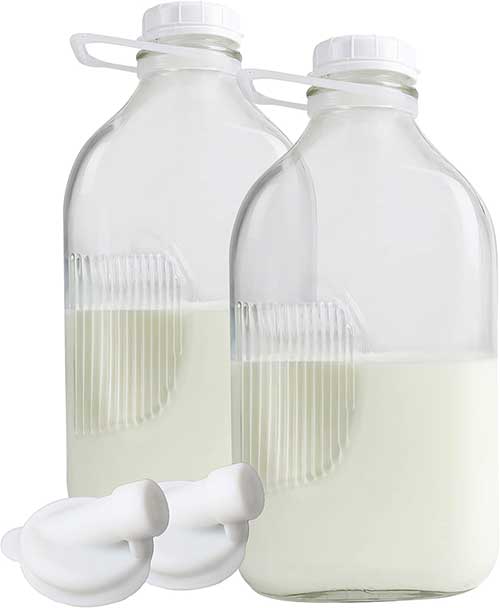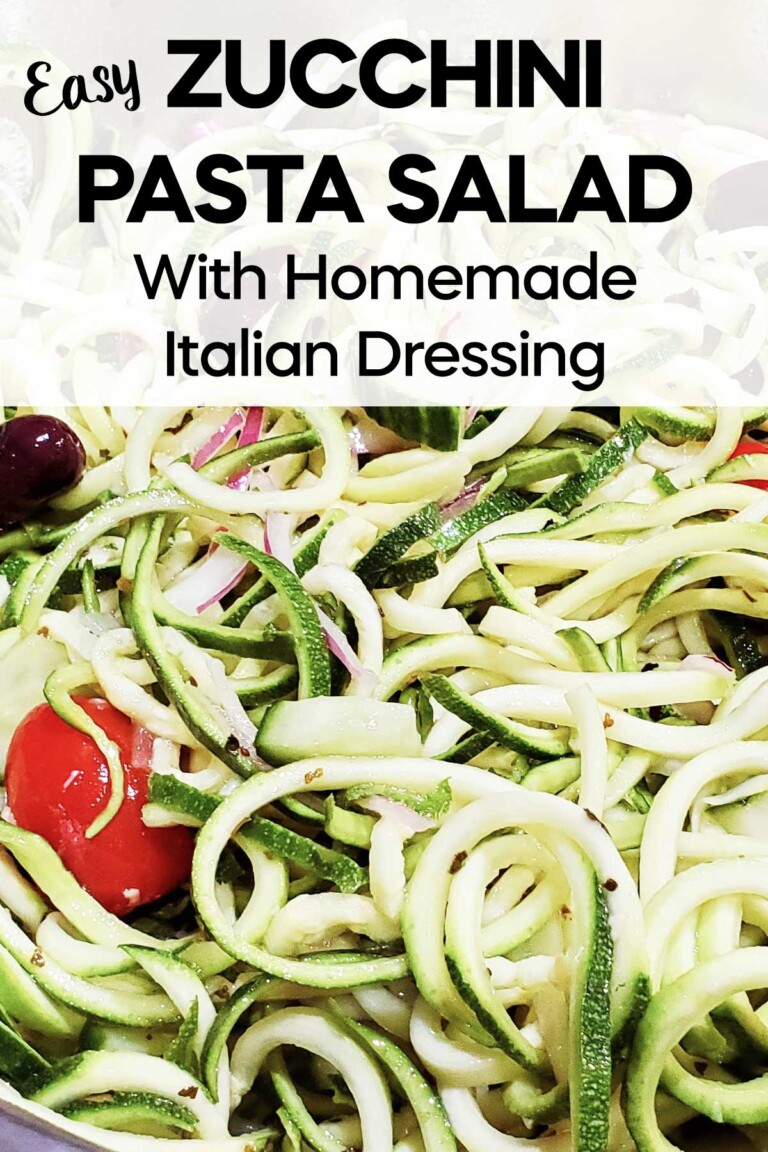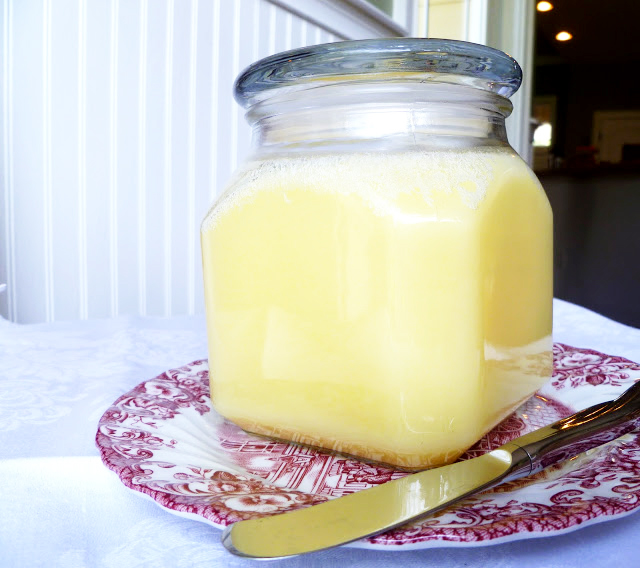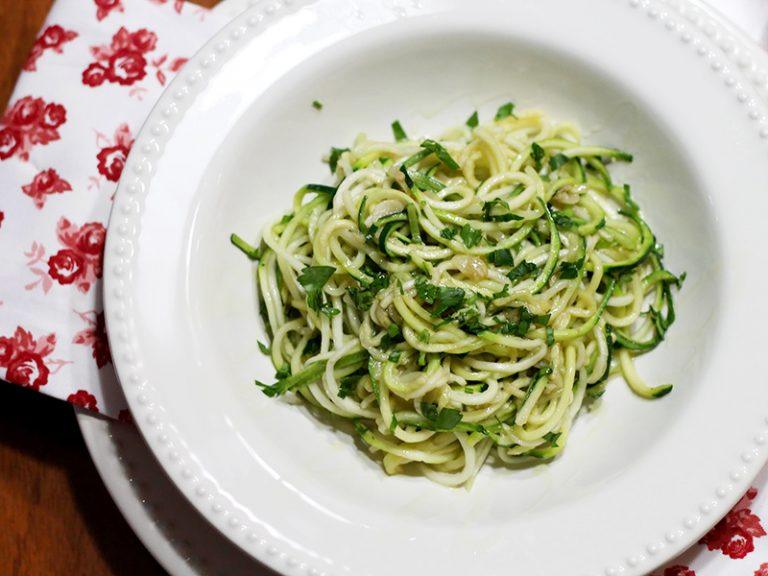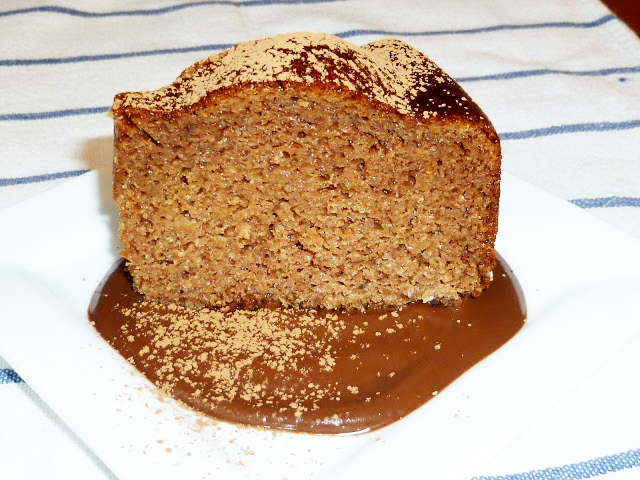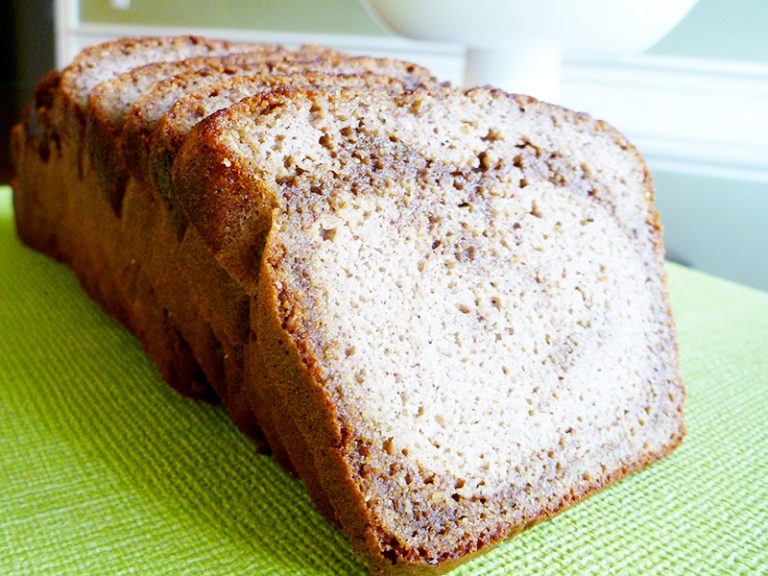Easy Way to Make Homemade Cashew Milk (Plus Health Benefits)
This post may contain affiliate links. If you make purchase after clicking a link, I may receive a commission at no extra cost to you.
Last Updated on October 16, 2023
Out of all the homemade nut milks out there, cashew milk is my favorite! In my opinion, it’s the creamiest dairy-free nut milk. Since it’s so expensive to buy at the grocery store, and store-bought nut milks often have additives and gums, I will show you how to make cashew milk yourself! My homemade cashew milk recipe is super easy and takes no time at all.
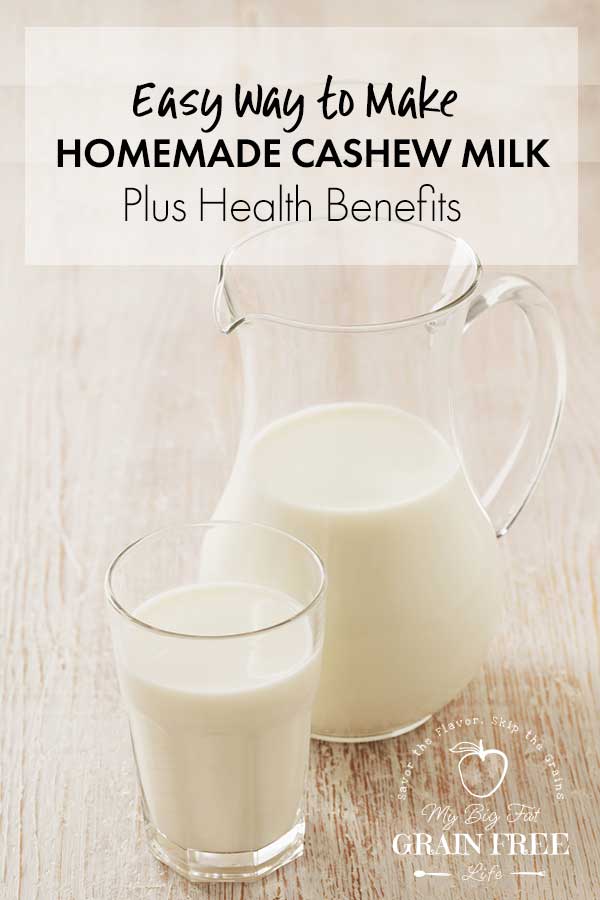
Cashew Milk
Cashew milk is a staple in our home; it’s our favorite favorite plant milk. I make my own cashew milk every week and use it in smoothies, sauces, quiche, as coffee creamer – really any place that whole milk or half-and-half is called for.
It’s a non-dairy milk alternative made from whole cashews. Cashew milk is made by blending soaked cashews with filtered water using a high-powered blender. After it’s blended, you strain the mixture using a nut bag or fine mesh strainer to remove any solids. Not everyone strains the milk though, since cashews don’t have skins.
Cashews make a creamy milk and have a slightly nutty flavor, making it a great choice for those who are lactose intolerant or following a plant-based diet. It can be used as a substitute for cow’s milk in various recipes or enjoyed on its own.
Cashew Cream
Looking for a thicker consistency – more like heavy whipping cream? Try cashew cream! I use it in place of cream for sauces like Chicken and Veggie Alfredo and Chicken with Mushroom Wine Cream Sauce. I will teach you how to make cashew cream too.
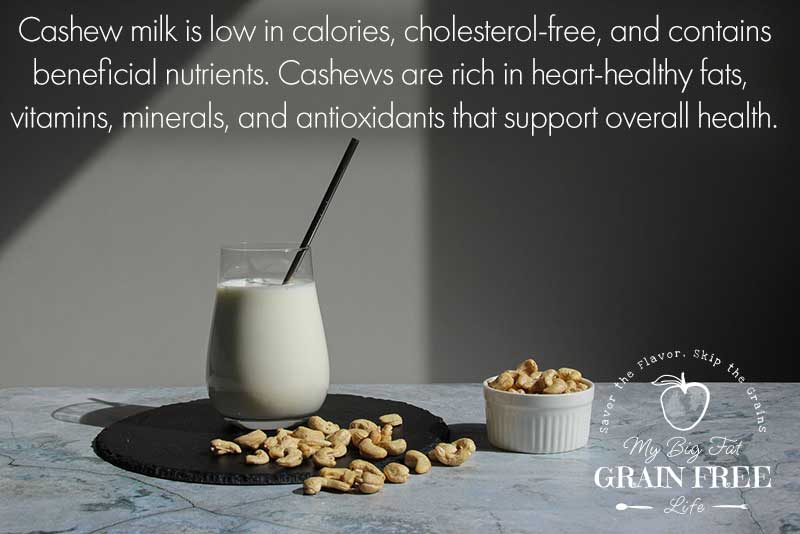
Health Benefits of Cashew Milk
Cashew milk is low in calories, cholesterol-free, and contains beneficial nutrients. Cashews are rich in heart-healthy fats, vitamins, minerals, and antioxidants that support overall health. Additionally, cashew milk is naturally lactose-free and suitable for those with lactose intolerance or dairy allergies.
Take a look at the impressive health benefits of cashew milk:
- Rich in nutrients: Cashew milk is packed with essential vitamins and minerals such as calcium, potassium, magnesium, and vitamin E.
- Heart-healthy fats: Cashew milk contains healthy fats that can help improve heart health by lowering bad cholesterol levels.
- Digestive support: The fiber content in cashews promotes a healthy digestive system and aids in preventing constipation.
- Weight management: Cashew milk is low in calories and fat, making it a great option for those watching their weight or trying to lose weight.
- Dairy alternative for lactose intolerance: Cashew milk is naturally lactose-free, making it an excellent dairy substitute for individuals with lactose intolerance or sensitivity.
- Bone strengthener: Thanks to its calcium content, cashew milk helps promote strong bones and reduces the risk of osteoporosis.
- Boosts immunity: With its antioxidant properties, cashew milk strengthens the immune system and protects against common illnesses like colds and flu.
- Muscle recovery aid: The protein found in cashews contributes to muscle repair after exercise sessions or physical activity.
- Skin nourishment: Vitamin E present in cashews helps maintain healthy skin by protecting against oxidative damage caused by free radicals.
- Blood sugar control: Cashews have a lower glycemic index compared to other nuts, which means they don’t cause significant spikes in blood sugar levels when consumed moderately.
How to Make Cashew Milk
Learning how to make cashew milk is easy! It’s one of my favorite nut milks to make because it leaves behind less pulp and has a smooth, creamy finish. It’s the best dairy-free milk to use in recipes that call for cow’s milk or heavy cream.
You can find the full instructions for this easy homemade cashew milk at the bottom of this post on the recipe card.
Cashew Milk Ingredients
Making your own delicious cashew milk is easy because you only need TWO simple ingredients: raw cashews and filtered water!
Soaking Cashews to Make Milk
Cashews need to be soaked before making cashew milk for a few reasons. First, soaking helps soften the cashews and makes them easier to blend into a smooth consistency. It also helps remove any bitterness or off-flavors from the nuts.
Additionally, soaking allows the cashews to absorb water, which results in a creamier texture when making milk.
Soaking also aids in breaking down enzyme inhibitors and phytic acid present in raw nuts, making them easier to digest and ensuring maximum nutrient absorption. Overall, soaking is an essential step that enhances both the taste and nutritional benefits of homemade cashew milk.
- Place raw cashews in a bowl.
- Cover the cashews with filtered water, ensuring they are fully submerged.
- Let the cashews soak for at least 3 hours and up to 6 hours in the refrigerator.
- After soaking, drain and rinse the soaked cashews thoroughly.
- The soaked cashews are now ready to be blended into creamy homemade cashew milk.
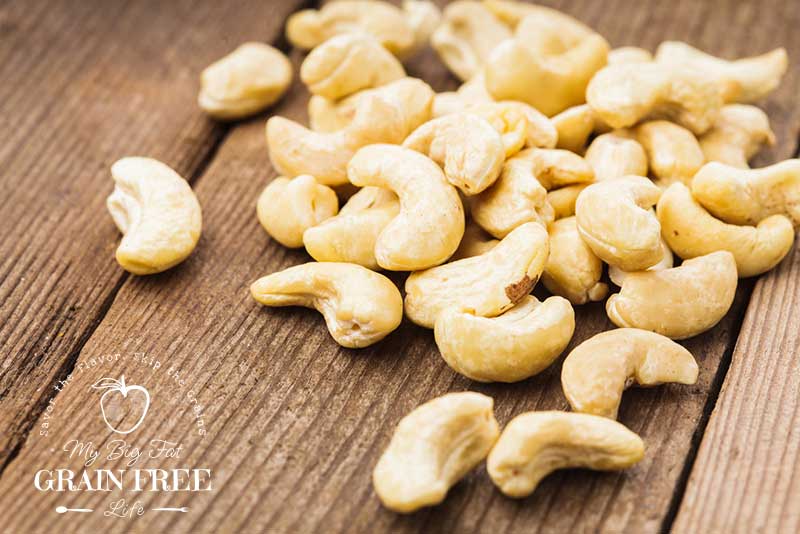
Blending Cashews into Milk
After your cashews have been soaked, give them a good rinse. Add them to a high-speed blender along with the filtered water and blend, starting on low. Gradually increase the speed and blend for several minutes to ensure a smooth and creamy texture. You don’t want grainy cashew milk!
If you make a lot of your own nut milk or other plant-based milks, such as oat milk, soy milk, coconut milk, or homemade almond milk, consider checking out the Almond Cow! I love my Almond Cow. It eliminates the need for a cheese cloth or nut milk bag, and is faster and easier to clean up.
The Almond Cow also eliminates the need for a high speed blender.
Straining Cashew Milk
While you don’t have to strain your batch of homemade cashew milk, I personally prefer to. When making other nut milks, like almond milk, you’ll have a lot of pulp leftover. However, cashew milk doesn’t leave behind much pulp since there are no skins.
If you use a Vitamix or Blendetc, you can blend it to oblivion and there’s not much need to strain it. If you decide to strain cashew milk, an easy way to do so is by using a nut milk bag like this one:
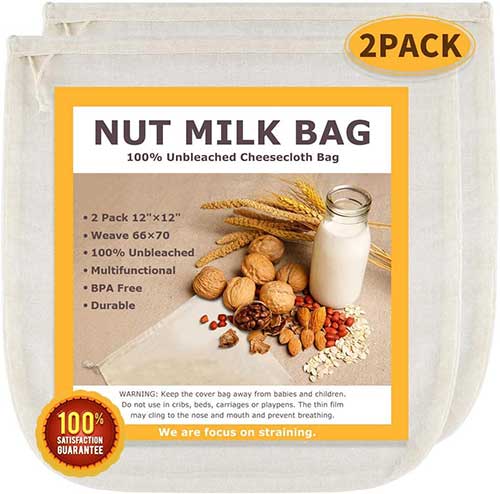
How to Store Homemade Cashew Milk
To store cashew milk, follow these simple steps:
- Transfer the homemade cashew milk into a clean and airtight container.
- Ensure that the container has enough space to accommodate the entire quantity of cashew milk without overflowing.
- Seal the container tightly to prevent any air from entering and contaminating the milk.
- Store the cashew milk in the refrigerator at a temperature below 40°F (4°C).
- Make sure not to keep it near strong-smelling foods as it can absorb odors easily.
You can also freeze small portions of cashew milk using ice cube trays. Just pop one out and put it in your coffee, or use it for a nice, creamy sauce.
I like to store my homemade nut milk in glass milk jars like the ones below.
How Long Does Cashew Milk Last?
By following the storage instructions above, you can safely store your cashew milk for up to four to five days in the refrigerator before it starts losing its freshness.
Cashew Milk Add-ins & Variations
When you use this milk for savory recipes, you will want to skip adding any flavorings. But, if you want to jazz up the plant-based milk with some sweetness, here are some great ideas:
- Vanilla extract: Add a few drops of vanilla extract to your cashew milk for a sweet and creamy taste.
- Cinnamon: Sprinkle some cinnamon into your cashew milk for a warm and comforting flavor.
- Cocoa powder: Mix in cocoa powder to give your cashew milk a rich chocolatey twist.
- Matcha powder: For an earthy flavor and a boost of energy, try adding matcha powder to your cashew milk.
- Maple syrup: Sweeten up your cashew milk with a drizzle of maple syrup for a delightful touch of natural sweetness.
Cashew milk tastes great in your morning coffee! You can use a healthier sweetener for coffee along with cashew milk for a thoroughly enjoyable cup of Joe.

How to Use Homemade Cashew Milk in Recipes
To substitute cashew milk for cow’s milk in various recipes, follow these simple steps:
- Determine the amount needed: Check the recipe to see how much cow’s milk is required.
- Use a 1:1 ratio: Replace each cup of cow’s milk with an equal amount of cashew milk. This ensures that you maintain the same liquid consistency in your recipe.
- Adjust for sweetness and thickness (optional): If desired, you can add a touch of sweetener like honey or maple syrup to mimic the natural sweetness of cow’s milk. Additionally, if a thicker texture is preferred, consider making cashew cream instead (instructions below).
- Consider flavor compatibility: It has a slightly nutty flavor which may impact the overall taste of your dish. It works best in recipes where this flavor complements other ingredients such as smoothies, baked goods, and creamy sauces.
You might also want to check out our comparison on hemp milk vs almond milk.
Cashew Milk Tips
what kind of cashews to use for milk?
The best type of cashews to make milk with is raw, unsalted cashews. Raw cashews have a creamy texture and mild flavor that works perfectly for making homemade cashew milk. Avoid using roasted or salted cashews as they can alter the taste and texture of the milk.
What is the ideal cashew to water ratio?
The best ratio for making this dairy-free milk is 1.5 cup of raw cashews to 4.5 cups of water. This ratio ensures a creamy and smooth texture while maintaining the right balance of flavors.
Frothing Cashew Milk
To get cashew milk to froth effectively, follow these simple steps:
- Start with homemade unsweetened cashew milk that is at room temperature.
- Pour the desired amount of cashew milk into a small saucepan and warm it gently over low heat until it reaches around 100°F (38°C). Do not let it come to a boil.
- Transfer the warmed cashew milk to a blender or use an immersion blender directly in the saucepan.
- Blend on high speed for about 30 seconds to create a smooth consistency and incorporate air into the mixture.
- If using a blender, pour the frothed cashew milk back into your cup or glass immediately after blending.
Ways to Use Leftover Cashew Pulp
- Add pulp to smoothies: The leftover cashew milk pulp can be a nutritious addition to your favorite smoothie recipes. Simply blend it in with other ingredients for added creaminess and fiber.
- Bake into cookies or energy balls: Give your baked goods an extra boost of flavor and texture by incorporating cashew milk pulp into cookie dough or energy ball mixtures. It adds moisture and richness while reducing food waste.
- Make homemade granola bars: Mix the cashew milk pulp with nuts, seeds, honey or syrup, and any desired additions like dried fruits or chocolate chips. Press the mixture into a baking dish, chill until firm, then cut into bars for a delicious and nutrient-packed snack.
- Use as a thickener in sauces and soups: Cashew milk pulp works well as a natural thickening agent in savory dishes such as sauces and soups. Stir it in towards the end of cooking to add body without using processed thickeners.
How to Make Cashew Cream
To make a thicker version of cashew milk, AKA cashew cream, use the following ratio of cashews to water:
- 1 1/2 cups raw cashew pieces, soaked 3-6 hours
- 1 1/2 cups filtered water
Follow these steps to make cashew cream:
- After soaking, drain cashews and toss into blender. Add water.
- Blend on low, then quickly turn blender to high and blend for several minutes.
- Cashew cream freezes well (think popsicles).
- I like to pour the cashew cream into small glass mason jars and then freeze. Its a breeze to take one or two out the night before to use later in recipes like Chicken and Veggie Alfredo.
So, next time, instead of using store-bought plant milk, you now know how to make your own!
PrintCashew Milk (Paleo, dairy-free)
Ingredients
- 1 1/2 cups raw cashew pieces, soaked 3-6 hours
- 4 1/2 to 5 1/2 cups filtered water
Instructions
- After soaking, drain cashews and toss into blender. Add filtered water.
- Start blender on low, then increase to high and blend several minutes.
- Cashews will go through a grainy stage but after a few minutes will change to a silky texture.
- Store in a glass container with a lid in the fridge 3-5 days.
- Shake well before using.



